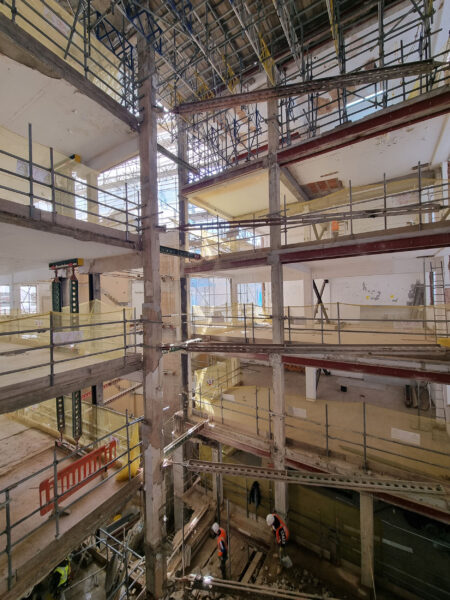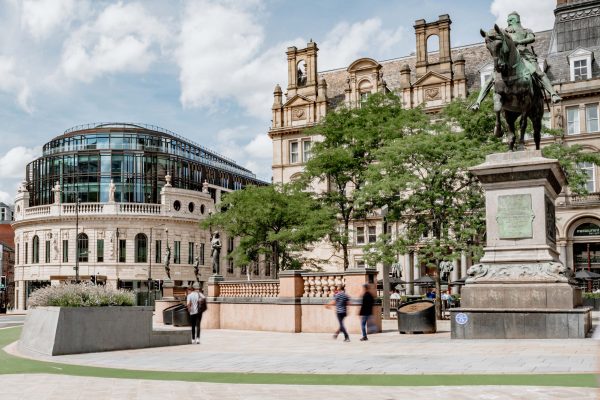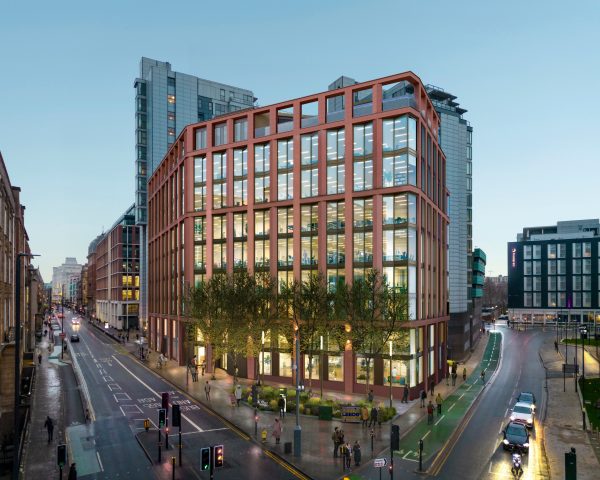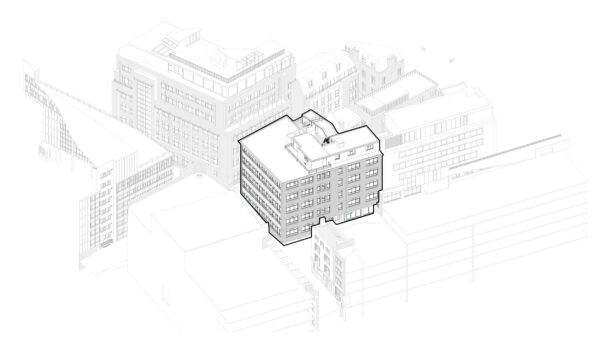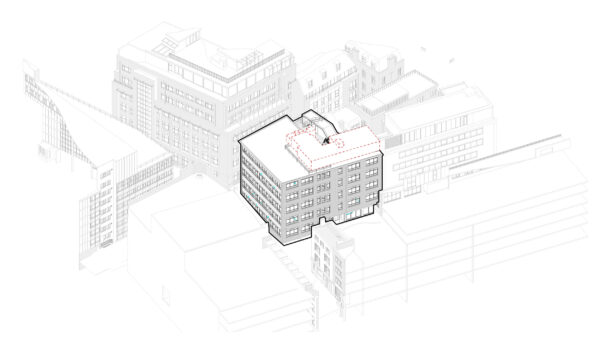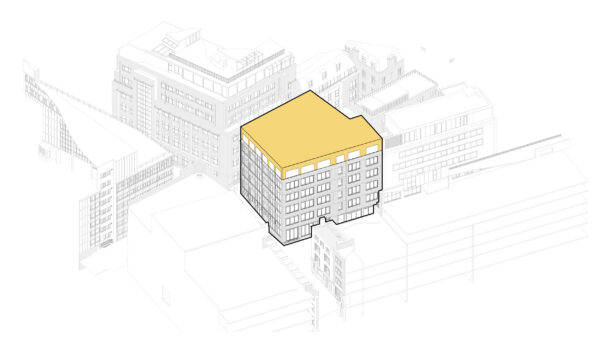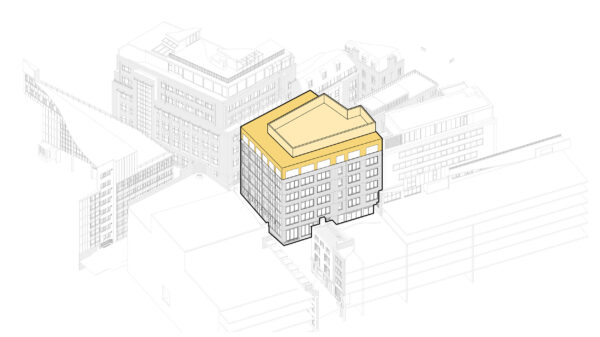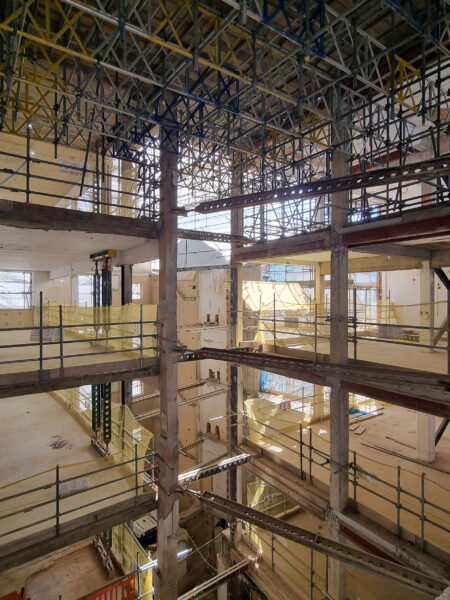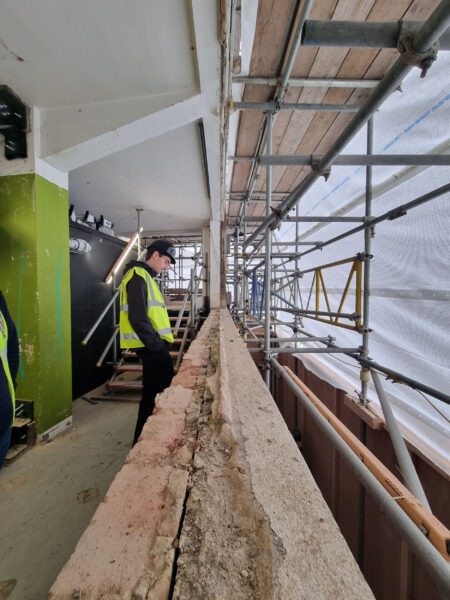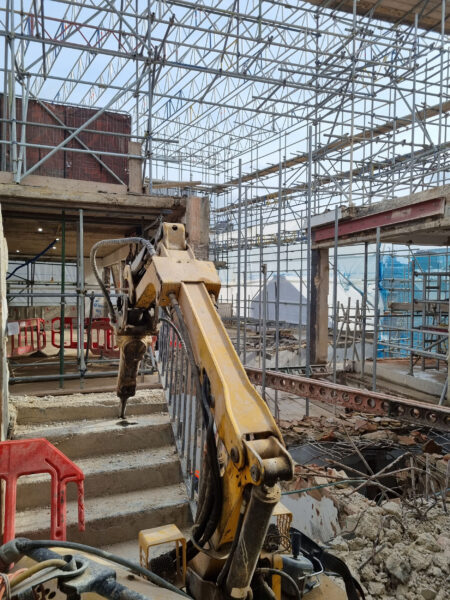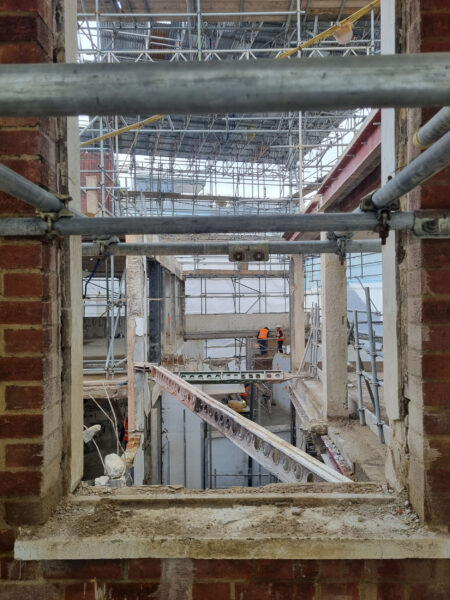20-24 Kirby Street
A gold standard office space


A contemporary, light-filled workspace in a 1970s shell.
We sought to uncover the special characteristics of an otherwise unremarkable & poorly performing 1970s office building to create a highly attractive and unique workplace with an additional floor and terrace. Together with a full amenity provision, smart-space equipped services and a contemporary reception, the project looks to be a great demonstration in sustainable regeneration of buildings typically demolished.


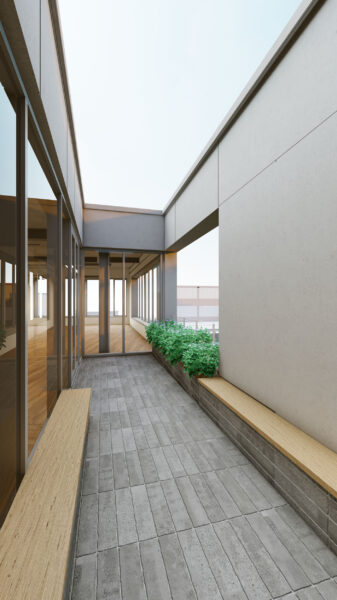


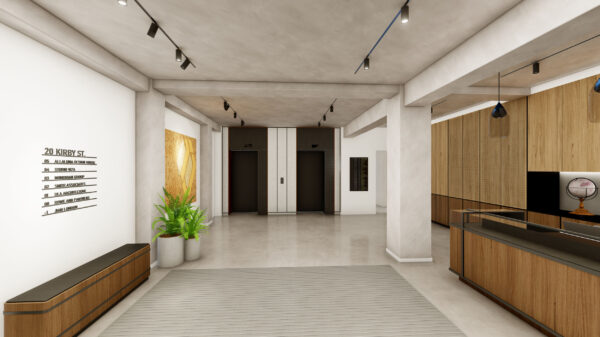
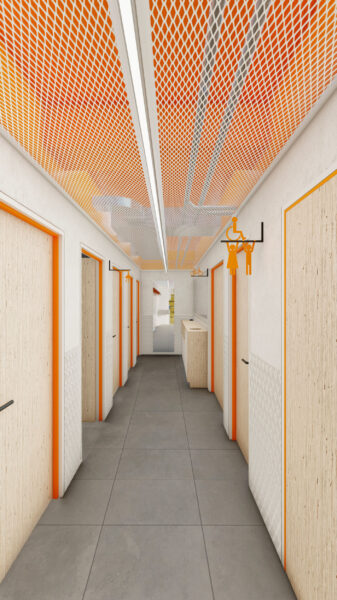
Reflecting its context within Hatton Gardens jewellery quarter
Hatton Garden is famous worldwide as London’s Jewellery quarter. This specialisation grew up in the early 19th century, spreading out from its more ancient centre in nearby Clerkenwell. This trade is protected locally and as such the project provides ~2,000 ft² of affordable jewellery workspace. Motifs of this trade can be found in the building, such as the jewellery cabinet reception desk.
Devastated by the bombings of WWII, the Hatton Garden Conservation Area is populated with medium sized concrete framed buildings that were hastily built in the 60s and 70s. Since then, the area’s popularity has grown and is a thriving hub for creative and tech companies, seeking bright, open workspaces that reflect their progressive ambitions. 20 Kirby Street is a typical example. Located at the end of a block, it enjoys continuous bands of daylight on three sides, smart-space equipped services and a refined but exposed aesthetic approach.
The Project is sited on Kirby Street, St. Cross Street and Saffron Hill (the insalubrious setting for Fagin’s den in Oliver Twist).
Farringdon (4min walk) a major transport hub as it interchanges several transport lines (circle, hammersmith, metropolitan with the Thameslink commuter rail line), and the opening of the new Elizabeth line station (Crossrail), has boosted the popularity of the area further, increasing the demand for offices in adjacent neighbourhoods like Hatton Garden.
Previous attempts to rejuvenate the building fell short, with architects proposing a scheme that divided the space with a central core. We saw beyond this limitation, recognising the building's potential. Instead of severing the structure, we embarked on a redesign focused on enhancing its inherent qualities.
The project began with an unassuming office building, the result of two amalgamated structures, lacking in remarkable features. Despite this lacklustre appearance, the building held promise, its potential recognised by the client. However, it was burdened with out-of-date services, an inefficient layout, and a thermal envelope that performed poorly due to single-glazed windows and an uninsulated roof.
Its triple-facing orientation, severed by stair cores, shafts and dark lightwells and a concrete frame creating clean linear bays spanning the building without structural interference, and end-of-block position allowed us to propose a full-size additional floor on top, complete with terrace.
This approach involved reimagining the core of the building, leveraging existing lightwells at the rear to create new shafts, stairwells, and lifts. By utilising these elements, we minimised the need for demolition and streamlined the construction process, breathing new life into the space while preserving its unique character.
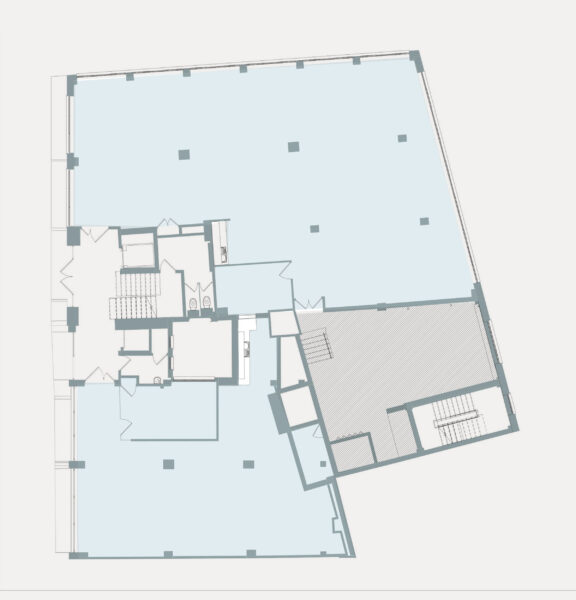

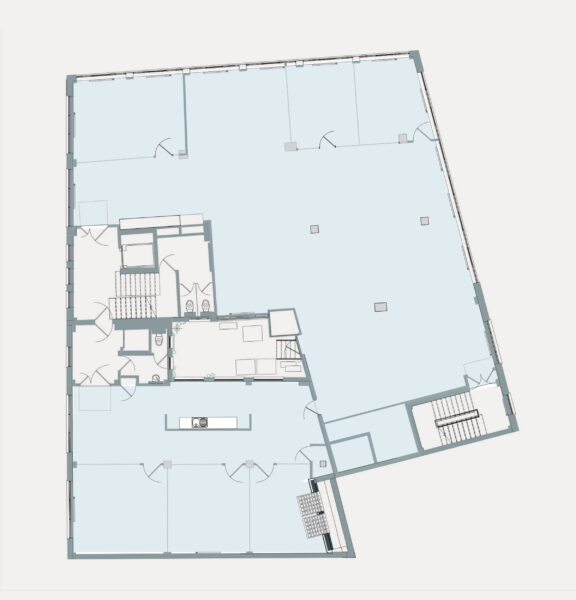


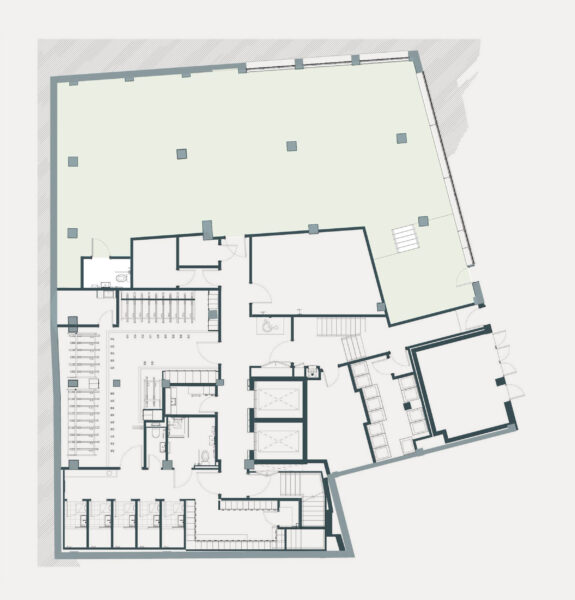
The building's transformation prioritised tenant experience, beginning with a new reception area set within a GRC façade and featuring a bespoke jeweller-inspired desk, and library. From here, lifts open directly onto office floors, while below, end-of-trip facilities cater to cyclists' needs.
To avoid visual interruption and ensure unintrusive soffits, a bespoke ventilation system has been designed with fresh air via a raised floor and temperature control from above, design in harmony with the structural grid providing the least visual interruption whilst enhancing user comfort.
The core footprint was minimised through a meticulous overhaul of fire safety measures, including a single escape stair, firefighting shaft, structural fire protection upgrades throughout and a mist system.
Efficient budget utilisation involved exposing existing surfaces and services, minimising structural modifications where possible while maximising impact, carefully penetrating existing beams and cutting beam depths.
- 1/4
- 2/4
- 3/4
- 4/4
A true sustainable approach to refurbishment
The project demonstrates climate leadership through its thoughtful approach to carbon reduction. Existing carbon-intensive elements like concrete and steel are minimally subtracted, while new elements are added sensitively. Retaining and building over the existing concrete roof structure reduced waste and emissions. A comprehensive thermal envelope upgrade, including non-combustible insulation for external walls, windows, and the roof, enhances energy efficiency. Embracing fully electric services further reduces carbon footprint. Achieving BREEAM Excellent certification underscores the project’s commitment to sustainable design and environmental stewardship.


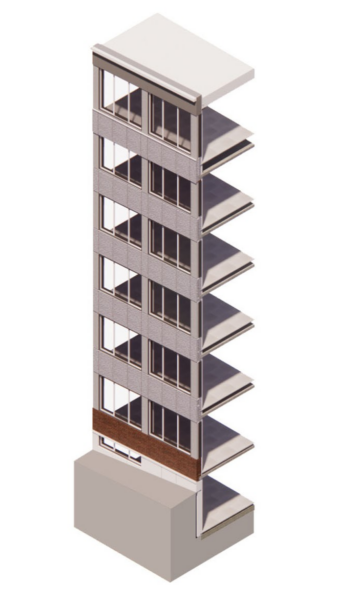
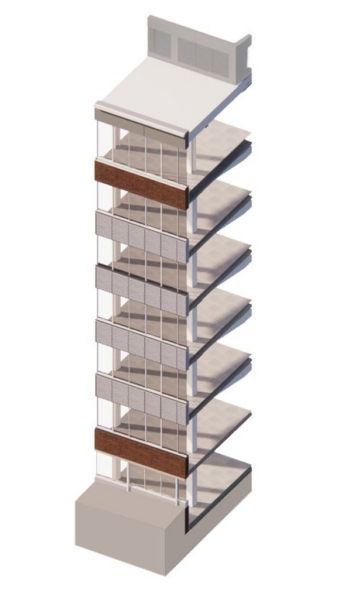
01 We love the detail!
Our passion for project delivery has been evident throughout the project. During the Pre-Construction Services Agreement (PCSA) period, we validated design strategies for specific packages, like facades, windows, and doors directly with the main contractor and their preferred subcontractors. Our commitment to 3D detail and coordination modelling facilitates integration of subcontractor models, allowed for continuous assessment of spatial fit and troubleshooting to avoid surprises during the build and remediation works. Real-time visualisations directly from these models enables us to consistently validate the interior design along the way.
- 1/4
- 2/4
- 3/4
- 4/4
02 Technology and Innovation
On completion, the building will be smart-spaces enabled. This will allow tenants to call lifts, adjust lighting, ventilation and control other amenities through their phones – a feature that will resonate with the burgeoning community of tech and design workers. An information screen in reception will relay data such as local train and travel times as well as community information.
Technology also plays a role during construction. Digitally it helps with problem solving, physically it assisted in the typically low-tech sector of demolition. The project required highly accurate and often partial, demolition of existing structures. Reinforced concrete projections over the public highway were sawn off, failing RC beam and clay pot floors were removed from the highest levels and retained beams were cut in depth, requiring operatives to observe, monitor and adjust work in real time, bringing risks. Demolition safety was enhanced through remote machines, such as several Brokk Demolition Robots and remote controlled 2m diameter rail saws, which allowed operatives to work accurately and in proximity to breaking but with limited risk.

Project team
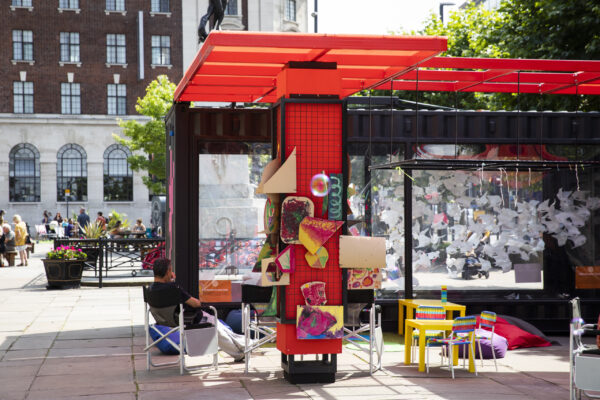
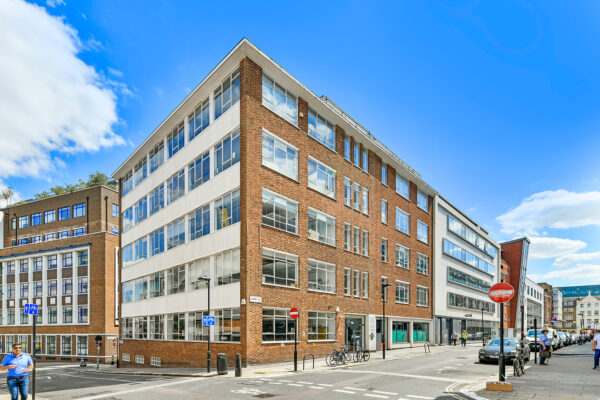
Existing Building - Kirby Street
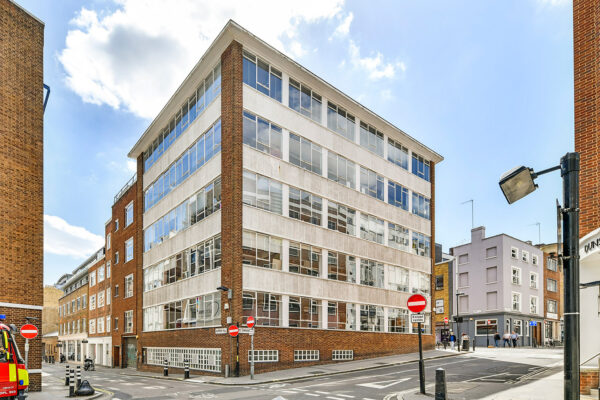
Existing Building - Cross Street
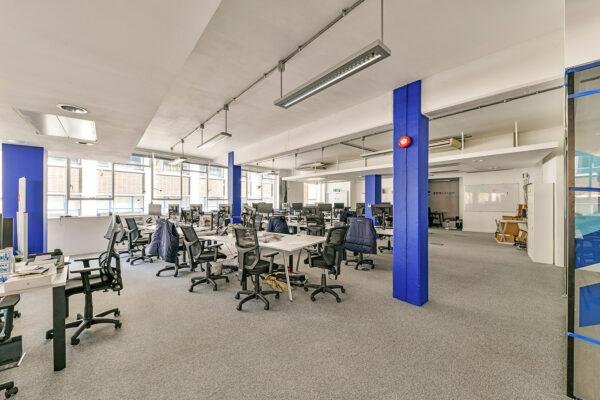
Existing Building - Typical Floor
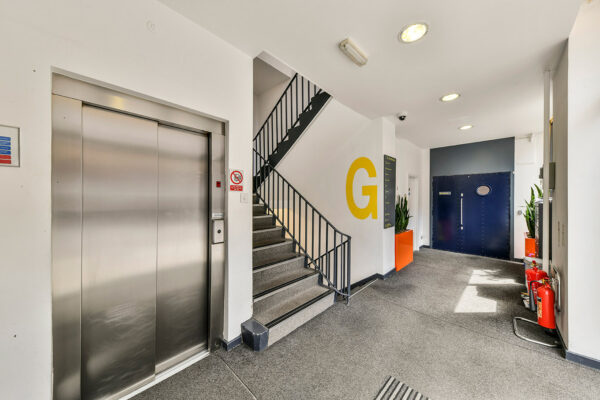
Existing Building - Core

Existing Building - Terrace
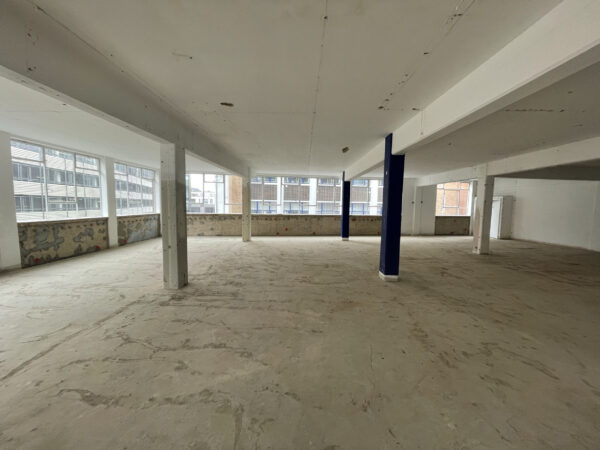
Existing Building - Typical Floor
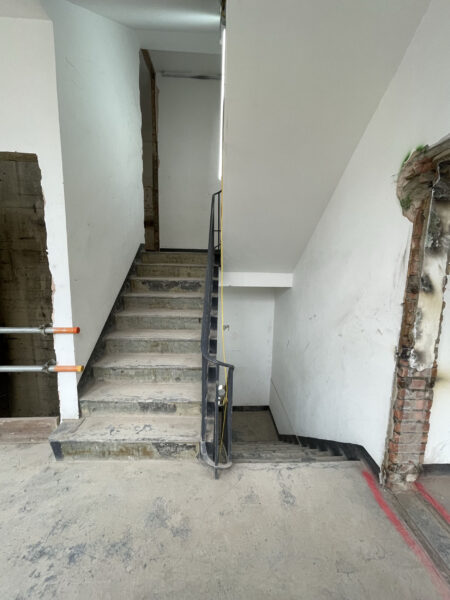
Strip-out Building - Core

Investigation Beam & Pot Ceiling
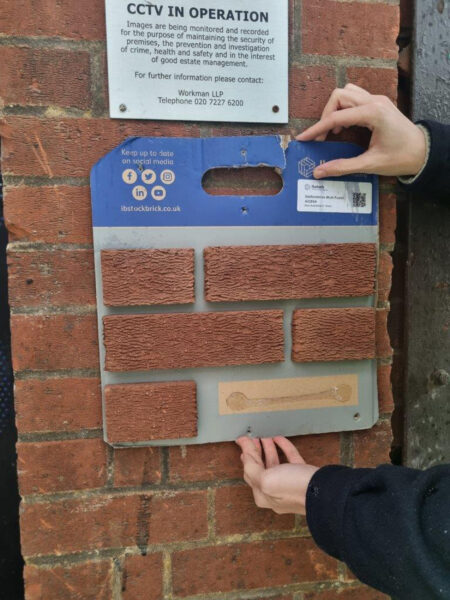
Brick matching
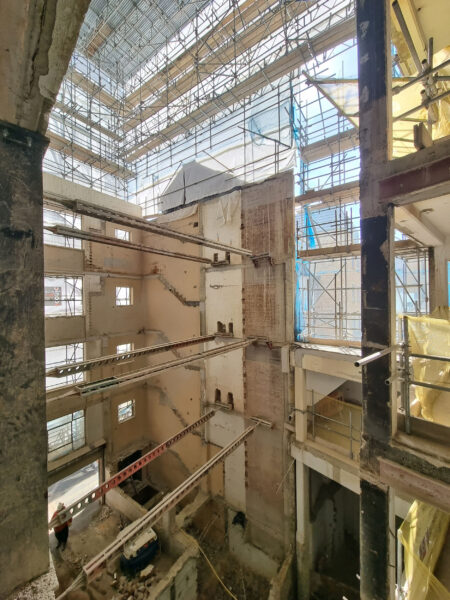
Major Demo
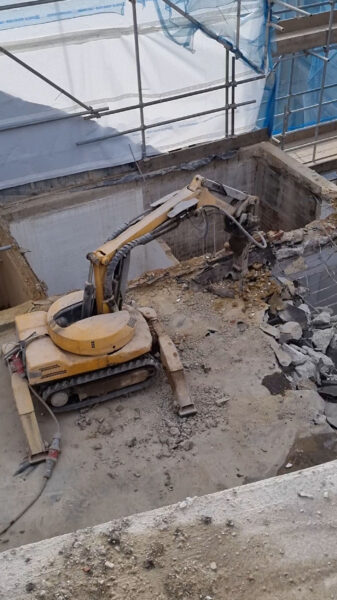
Heavy going
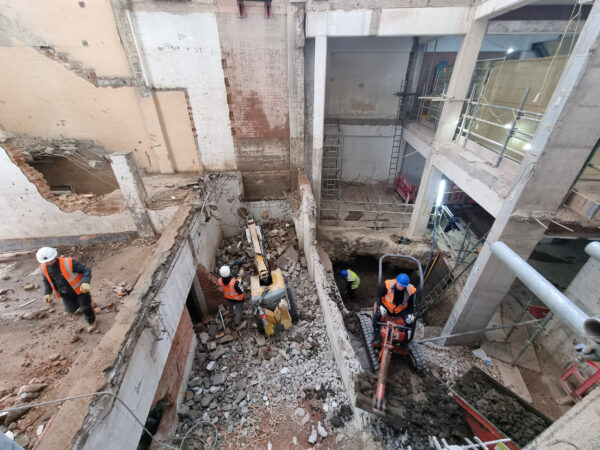
Last Floor
